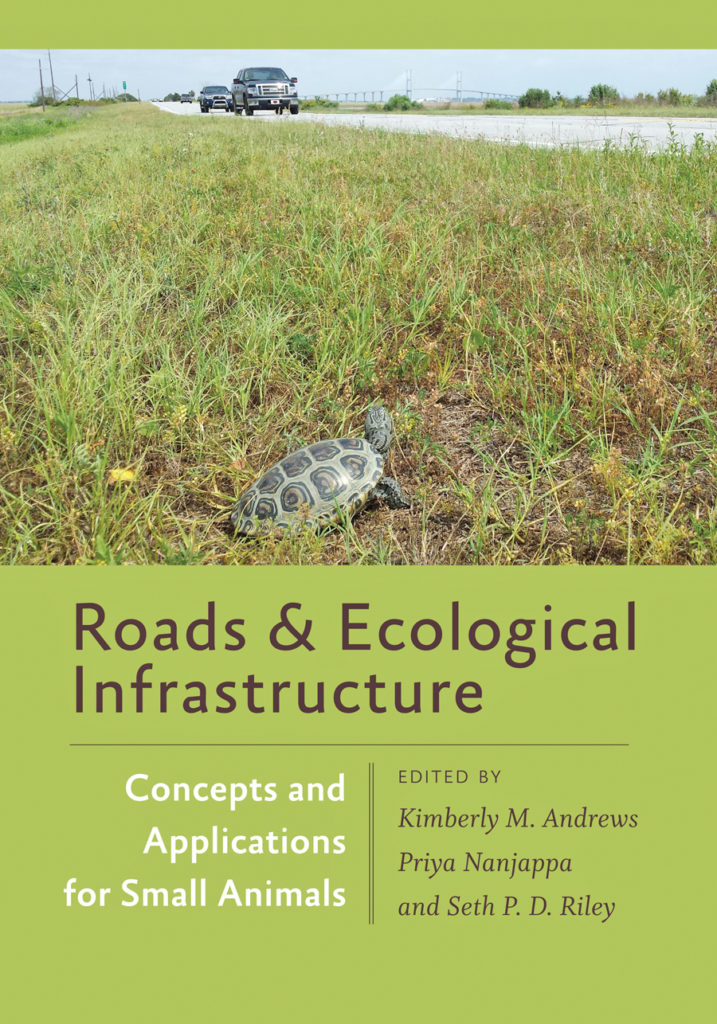Athens, Ga. – For many species of wildlife, particularly those that are small and slow-moving, roads can be major barriers, often with dire consequences for individual animals and entire populations.
“Roads and Ecological Infrastructure: Concepts and Applications for Small Animals,” edited by University of Georgia ecologist Kimberly Andrews, addresses the impacts of roads on wildlife populations. It explores a number of design and mitigation strategies to avoid or reduce conflict with reptiles, amphibians and small mammals.
Andrews, a member of the graduate faculty at the Odum School of Ecology, an education program specialist at the Savannah River Ecology Laboratory and research coordinator at the Jekyll Island Authority’s Georgia Sea Turtle Center, explained that roads can have devastating effects on populations of small animals.
“Most efforts to prevent road-wildlife conflicts have focused on large mammals like elk, but small animals account for much of the wildlife killed on roads,” she said. “Those that need to move among different types of habitat for different parts of their life cycles are particularly at risk.
“Road mortality is taking a tremendous toll on many of these species, especially reptiles and amphibians; their loss in turn affects the entire ecosystem of which they are a part. But many people, including transportation policymakers, aren’t aware of the scope of the problem. That’s why we decided to write this book.”
“Roads and Ecological Infrastructure,” co-edited by Priya Nanjappa of the Association of Fish and Wildlife Agencies and Partners in Amphibian and Reptile Conservation and Seth P.D. Riley of the U.S. National Park Service, includes contributions from ecologists, wildlife ecologists and transportation experts.
It synthesizes the growing body of knowledge about small animal road ecology with information about transportation planning, design and maintenance. Topics covered include the natural history and physiology of small animals in relations to roads, direct effects of roads on small animal populations, road effects on small animal habitat, the transportation planning process and applying mitigation strategies and adaptive management to enhance wildlife passage.
Written in an accessible style, it is intended for use by ecologists, government transportation agencies, non-governmental environmental organizations and individuals interested in conservation. It is published by Johns Hopkins University Press and is available at https://jhupbooks.press.jhu.edu/content/roads-and-ecological-infrastructure.
